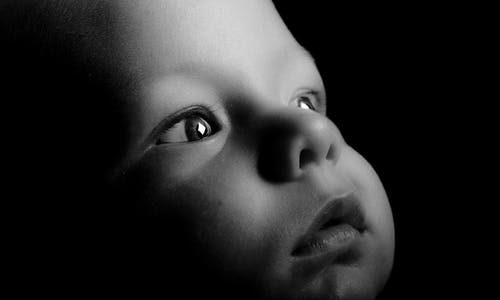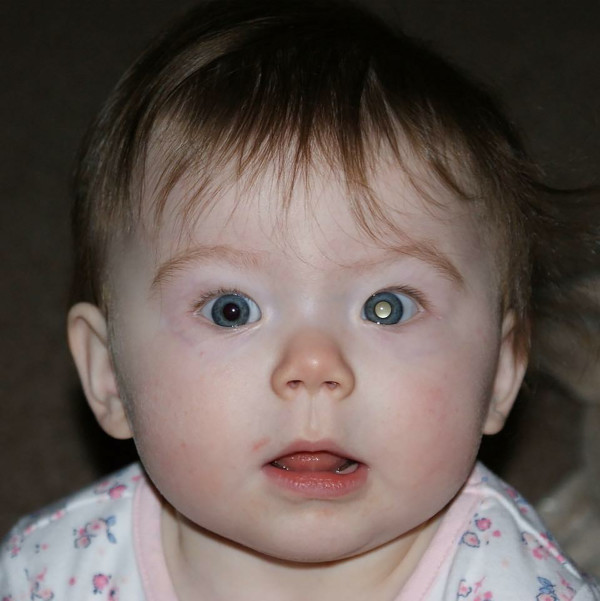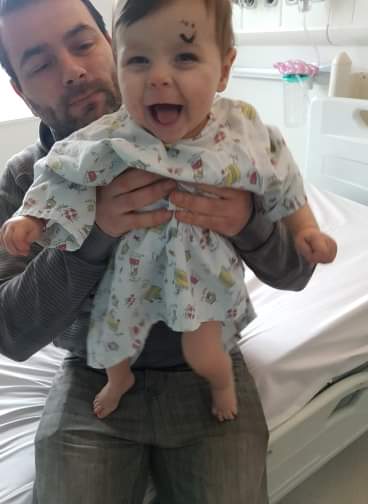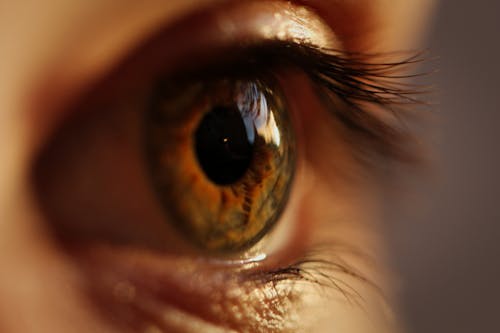
What is retinoblastoma and how do we identify it in our children?
Have you ever known in your gut that something was wrong with your child, even though everyone around you said they were fine?
Mum Rada Hristova, from Kent, had been worried about Katherina since she was three months old, as she would not stop crying and seemed to be in constant pain. GPs assured the mother that her behaviour was likely due to wind or that she was simply “a sensitive baby”.
Unconvinced, Rada knew deep down that there was something not right with her little girl and persisted with trying to find out the cause of Katherina’s discomfort. Rada said: “I felt like the worst mum in the world because I couldn’t settle my baby and no one could tell me why.”
Then at six months old – just days after Katherina’s most recent GP examination – Rada’s sister-in-law Dessie spotted something in Katherina’s eye.
Rada said: “She rushed into the room and was crying and shaking. She said she’d seen a ‘white dot’ in Katherina’s eye and had heard previously that this could be a sign of something serious. We both Googled it and the scary diagnosis of eye cancer came up. Although neither of us could see the white dot again, I then noticed that Katherina’s eye looked dull in comparison to the other one which was bright and shiny.”

Rada and her partner Lyudmil took Katherina to A&E. Having examined her eyes, doctors urgently referred the family to Maidstone Hospital Eye Clinic. It was there that the parents received the devastating news that the ‘white dot’ seen in Katherina’s eye was a large tumour – so large that she was already blind in that eye.
Their fears were confirmed – their daughter had retinoblastoma, a rare eye cancer that typically affects babies and young children. The family were immediately referred to the Royal London Hospital specialist retinoblastoma centre.
“Even though it made sense, I still couldn’t believe that my daughter had cancer. When you picture a child with cancer, the child looks ill. However, aside from all the crying, Katherina otherwise looked like a healthy child.”
Katherina’s left eye was removed a few days later to stop the cancer from spreading.
Rada said: “The staff at the Royal London Hospital were absolutely amazing and they talked though everything with us, reassuring us that everything was going to be fine. I was scared to see her after the operation – I was still in shock about what she would look like. But the moment they took off the bandages and revealed the temporary artificial eye they had in place of her eye, my mum reassured me that my little girl was still ‘perfect’.
“I kissed Katherina on the forehead and told her that ‘when she wakes up, she will be more perfect’.”

In what was a huge relief to the family, after her operation, Katherina’s pain immediately stopped.
“It was like something had changed my little girl. She suddenly stopped crying, started smiling and would sleep like a normal child. You could see that she was finally happy.”
Another blow came to the family when smaller tumours developed in Katherina’s remaining eye. Thankfully these could be treated with cryotherapy (freezing).
The now happy and energetic Katherina has since been fitted with a proper artificial eye, designed to perfectly match her other, and is currently attending regular check-ups at the hospital. The family are also looking forward to celebrating her second birthday in the summer.
Rada added: “I’m forever grateful to my sister-in-law for spotting Katherina’s tumour. Dessie – thank you for saving my daughter’s life. Had the cancer been left any longer, it may have been a different story.”
As part of World Retinoblastoma Awareness Week (Sun 9th – Sat 15th May) we’re urging parents to be aware of the symptoms of eye cancer and to not delay in seeking alternative advice from another healthcare professional if they are unsatisfied.
To mark World Retinoblastoma Awareness Week running 9th-15th May, the Childhood Eye Cancer Trust is urging parents to be aware of the most common symptoms of eye cancer – a white glow in the eye (sometimes only visible in certain lighting) and a squint – as well as to seek an alternative opinion from a health care professional if they are not satisfied.

Patrick Tonks, Chief Executive of the Childhood Eye Cancer Trust said:
“Retinoblastoma is rare, with around one child being diagnosed in the UK each week. Symptoms can be quite subtle, and children can often seem physically well which can make it very hard to diagnose. However, if you do notice any of the signs in your child’s eyes, they must be examined urgently in person by your GP or another healthcare professional.
“We know GP services have been under huge pressure this year, but we urge parents to trust their intuition and seek additional help from another healthcare professional if they are not satisfied. Avoiding delay with a retinoblastoma diagnosis can help save their child’s sight, eyes and even life.”
Retinoblastoma is a rare and aggressive form of eye cancer that affects babies and young children, mainly under the age of six. On average, around round 40-50 cases are diagnosed a year in the UK – or one child a week. It represents 3% of all childhood cancers and 10% of cancers in babies under the age of one in the UK.
Around 98% of children survive retinoblastoma in the UK but early diagnosis is crucial in order to save a child’s eyes, sight and life. The most common symptoms are a white glow in a child’s eye or pupil in dim lighting or when a photo is taken using a flash, and a squint.
For more information on the signs, symptoms and treatment of retinoblastoma, please visit www.chect.org.uk.
